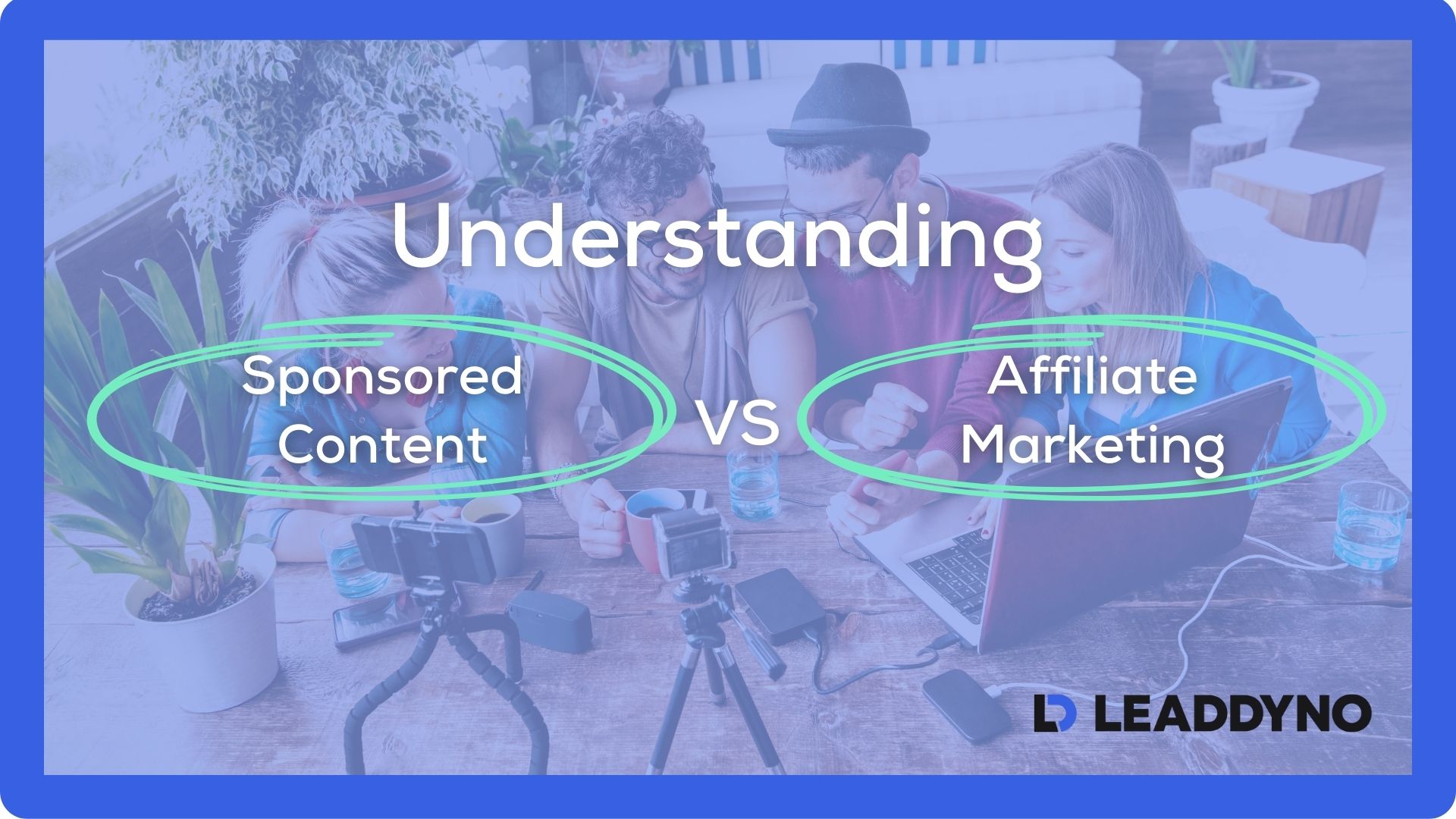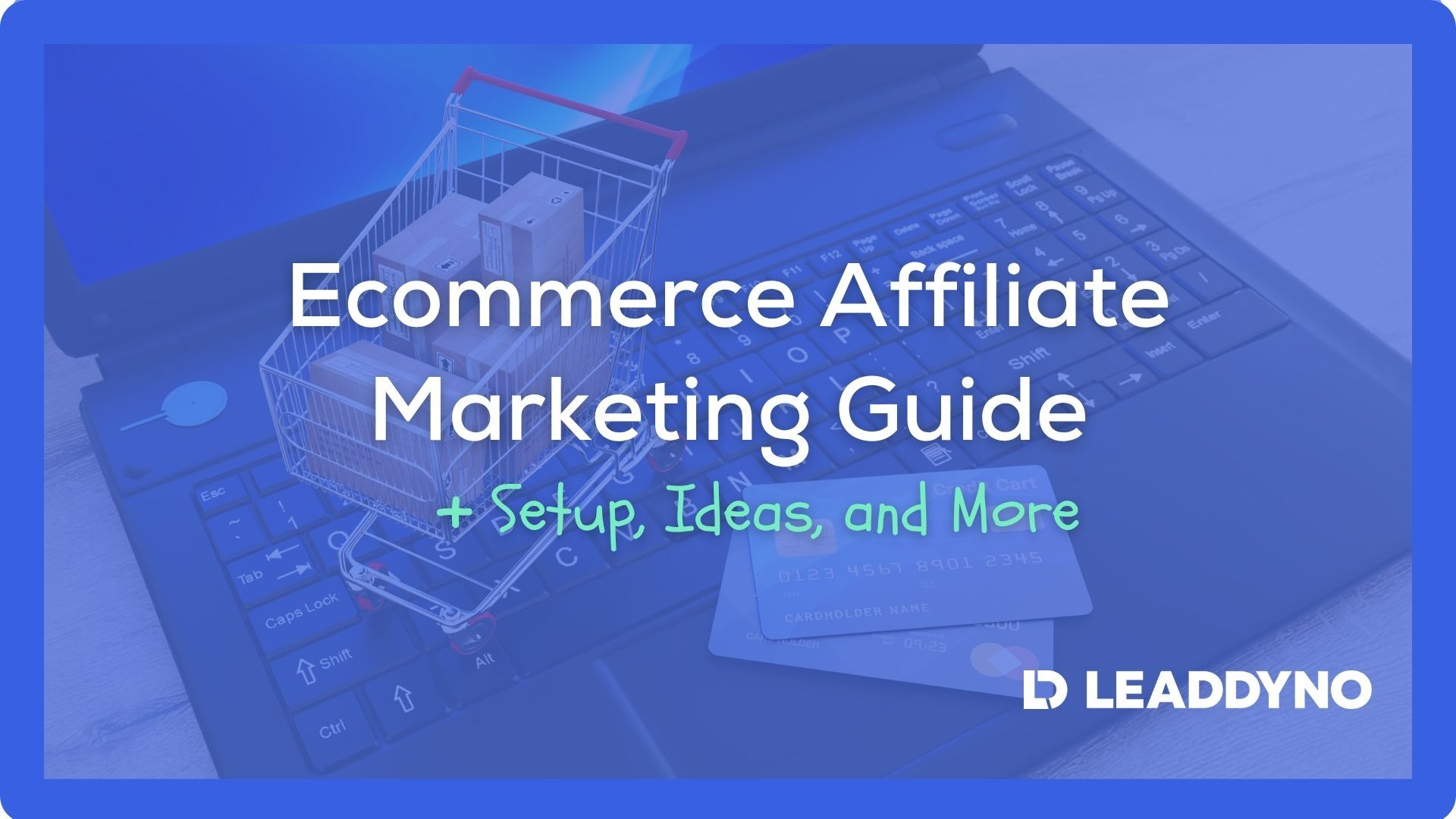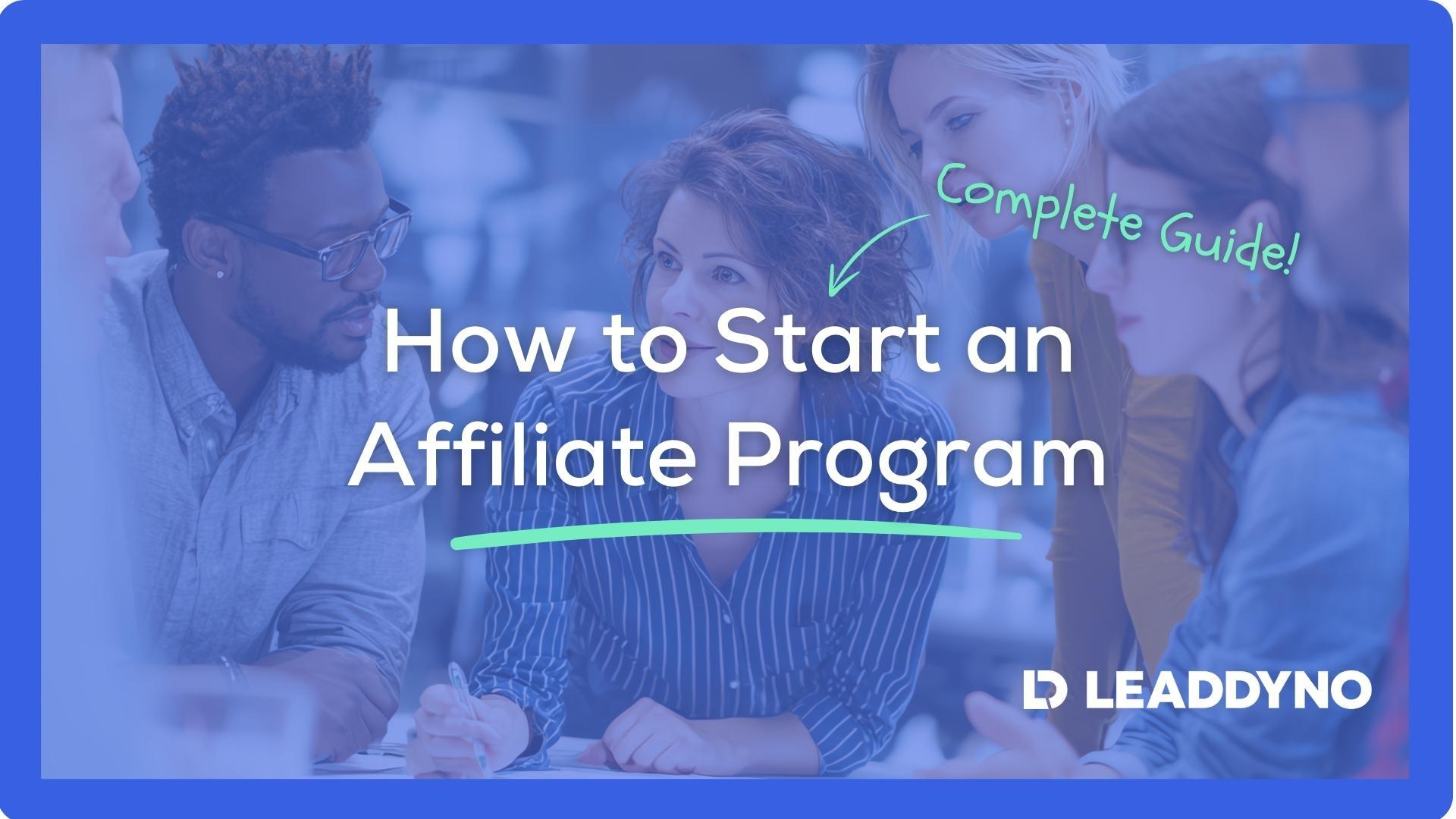Understanding Sponsored Content vs Affiliate Marketing
Published:
August 21, 2025
Written by: Sarah Lasko
Published:
August 21, 2025
Written by: LeadDyno Admin

Book a Demo
See how LeadDyno can take your affiliate marketing strategy to the next level. Let’s set up a 1:1 demo to get your questions answered.
Download your FREE Affiliate Agreement Template
Oops! Something went wrong while submitting the form.
Thank you!
Oops! Something went wrong.
If you've spent time scrolling social media, reading online articles, or browsing blog posts for recommendations on the latest products, you're probably familiar with content that has disclaimers like "Presented by," "Partnered with," "Paid post," "Promoted," and other similar labeling. These common phrases indicate that you're looking at sponsored content, which means a brand like yours spent some money and probably compiled an entire content marketing strategy to get that specific piece in front of a particular audience.
Sponsored content is an excellent digital marketing tool for brands to use to reach their target audience without sounding like they're trying to sell them something. It provides valuable information and helps persuade potential buyers without seeming too pushy. This kind of native advertising fits in naturally with the rest of the page content and doesn’t come across as pushy or disruptive. It looks like it's supposed to be there naturally, which customers appreciate.
What is sponsored content, and when should you use it?
So what makes a sponsored post? Sponsored content isn't restricted to any type of format or style. It includes everything from sponsored articles and infographics to branded social media posts and podcast episodes. Other common forms of sponsored content include:
- Listicles
- Blog posts
- Photos
- Videos
- Carousel ads
- Instagram stories
- TikTok videos
- YouTube videos
Due to its nature, social media is perhaps the most obvious place to find branded content online since influencer marketing has proven to provide strong ROI. Social media tops the list of paid methods B2C marketers use to reach their target audience. To use it in your favor, all you need to do is ensure that the company or influencer that you're sponsoring posts about topics that align with your brand and engage your core audience.
When done right, sponsored content will help you seamlessly advertise your products or services while providing your prospective customers and captive clients with added value. As a result, your brand will appear more memorable and credible by creating an enjoyable user experience — instead of disrupting it. This will ultimately generate more leads than any other paid advertising effort.
Understanding affiliate marketing vs sponsored content
Sponsored content has been around for more than one hundred years. It originated in the 1920s, when radio stations transmitted soap operas and sneakily marketed certain products within the stories. While still present on radio, sponsored content now spans nearly every media channel, from television to email marketing to social media. It appears wherever brands can pay other companies and influencers to mention their products and services organically.
Many people might think that sponsored content and affiliate marketing are interchangeable terms. But in reality, when it comes to sponsorship vs partnership, there are some key differences, especially in regards to compensation. Affiliate marketing utilizes partners to promote a brand. These affiliate partners receive a commission every time someone makes a purchase from that promotion. Conversely, sponsored content creators get paid for their participation alone, without any dependence on successful conversions.
{{blog-cta}}
What are the benefits of sponsored content?
Society has developed such a strong aversion to intrusive online ads that most people can instinctively ignore many kinds of digital marketing. There’s actually a technical term for this phenomenon when it comes to traditional online ads: banner blindness. Consequently, display ads, banner ads, and full-page ads don't perform as well as they once did.
Sponsored content offers a solution to this issue by inconspicuously placing ads in plain sight using more discrete methods. On any social media platform, sponsored posts look exactly like other types of content created by the average user, which makes viewers more likely to lower their guard.
There are 3 primary perks to paying for sponsored content as a brand:
- It generates increased sales.
- It gets higher engagement rates.
- It builds trust.
But how is this style of advertising legal? According to the Federal Trade Commission, as long as the content clearly states that it's connected to a brand, it’s fully allowed. But all disclosures regarding sponsored content must be written in an unambiguous language and in a font and color that's easy to read.
It may surprise you to learn that even when users know that content is sponsored, they’re still more likely to pay attention than when they’re shown a more typical ad; in fact, they’re 22x more likely. With statistics like that, it makes sense that brands are investing more in sponsored content than ever.
What are the drawbacks of sponsored content?
Some claim that sponsored content is misleading to the consumer. Critics argue that as long as there are brands willing to pay for posts, there will always be people ready to sing their praises. Since branded content is hard to distinguish from editorial content, it can jeopardize the integrity of a publication and a brand's image. Other downsides to sponsored content include the following:
- It can be hard to measure performance accurately.
- If not clearly labeled, it may mislead viewers.
- Producing high-quality content often takes time and comes with a high cost.
Even with these potential disadvantages, we still believe that brands should utilize sponsored content. When brand recall is 59% higher from branded content than from other kinds of digital ads, it’s clear that the benefits of sponsored content outweigh the risks.
Why you should combine sponsored content with affiliate marketing
Using sponsored content as the sole element in your strategy might not get you the results you're hoping for. But by combining sponsored content with other marketing efforts, you’re more likely to boost lead generation and ultimately, drive more conversions.
Using an affiliate program in conjunction with sponsored posting can work wonders for your brand. It allows you to also recruit talented partners who are willing to only make profit from conversions rather than from the flat fee of the sponsored post. While using both methods at once might be more expensive than relying only on your average affiliate program, it will also help you engage with your customers on a deeper level.
You can always negotiate with your partners by asking them to meet you in the middle. Or you can offer them a lower rate on their sponsored content while still getting them involved in your affiliate commission scheme. At the end of the day, by sharing your affiliate link over and over, they could end up making more passive income than they would with their sponsored post fees.
Another way of dealing with this issue is by offering potential partners free samples and discount codes. The product value will make up for any paid sponsorship fees so that you can mix both marketing models successfully.
{{blog-cta}}
Conclusion
Sponsored content is a highly useful content marketing tool for reaching an audience you'd otherwise miss with traditional advertising. Not only does it help increase brand awareness and consumer trust, but it also motivates customers to try your products or services, increasing sales considerably. By utilizing both strategic affiliate marketing and effective sponsored content, you can further boost your conversions and increase your return on investment.
If you're ready to start understanding affiliate marketing and how it can improve your content marketing strategy, you can watch a LeadDyno demo on-demand or start your 30-day free trial today!
Download your FREE Affiliate Agreement Template
Oops! Something went wrong while submitting the form.
Thank you!
Oops! Something went wrong.
.webp)
Written by:
Sarah LaskoSarah is an NYC-based business, technology, and arts writer who specializes in B2B writing for thriving SaaS tech apps. You can view her portfolio here.
Published on
This is some text inside of a div block.
Written by:
LeadDyno AdminLaunch your affiliate program with confidence thanks to our 30-day free trial. Learn more...
Published on
This is some text inside of a div block.
Written by
LeadDyno AdminLaunch your affiliate program with confidence thanks to our 30-day free trial. Learn more...
Published on
This is some text inside of a div block.
.svg)
Start a Free Trial
30 days free · Full Access
Cancel anytime
You might also be interested in...
Get Started Today
Launch your affiliate program with confidence thanks to our 30-day free trial. Begin building a program that delivers results.
Start Free Trial
30 Days Free





